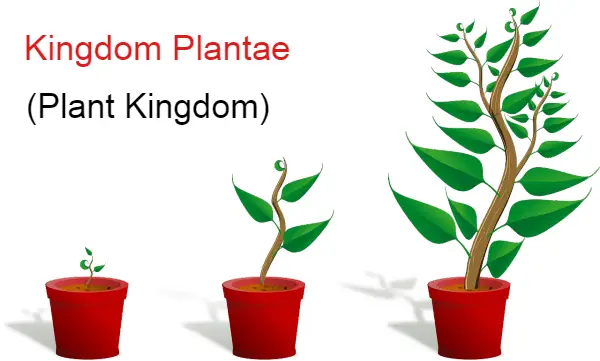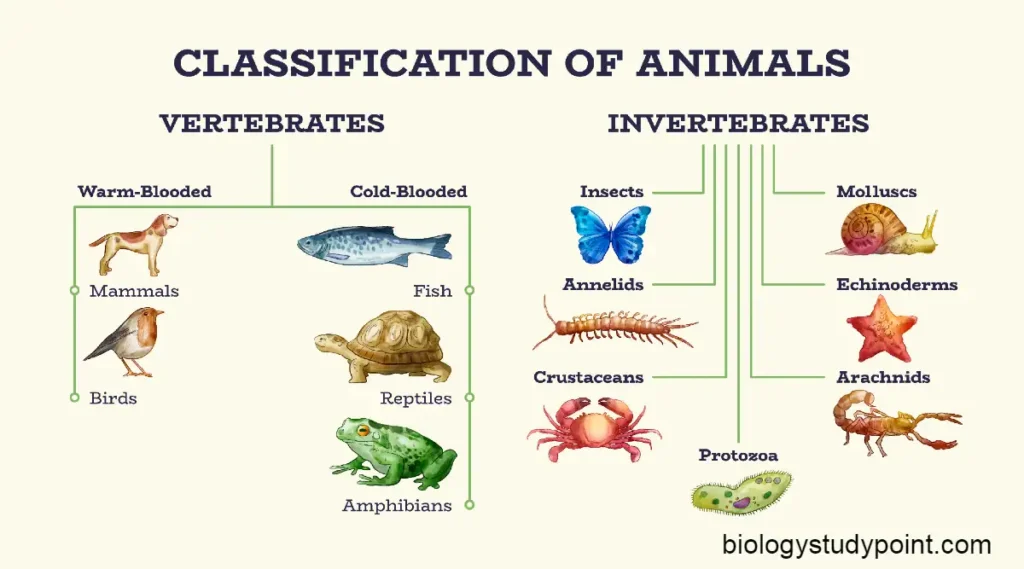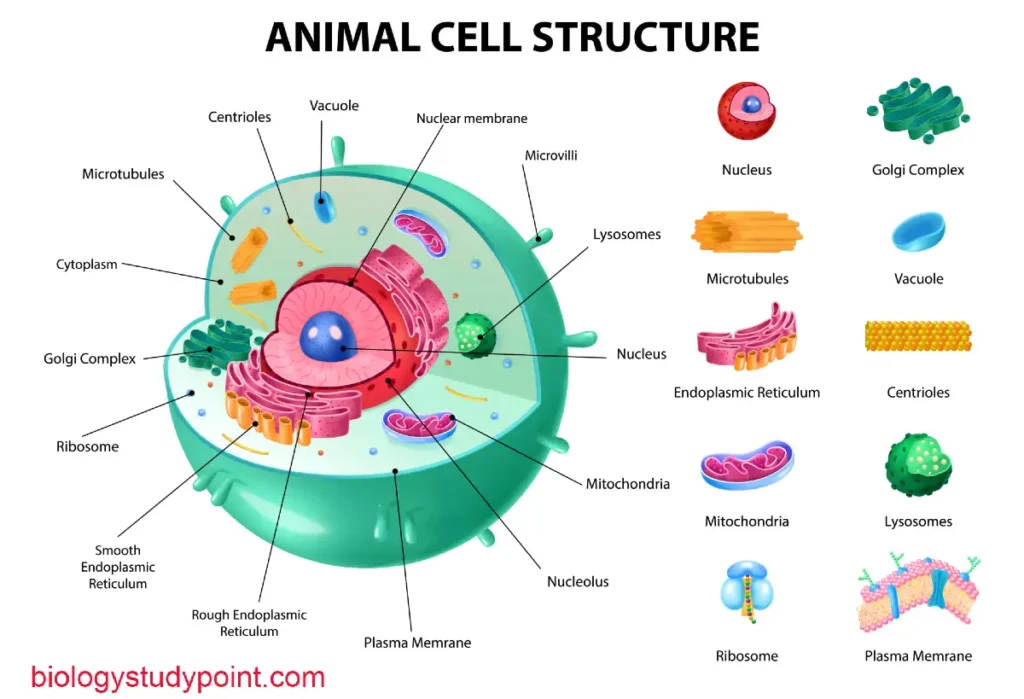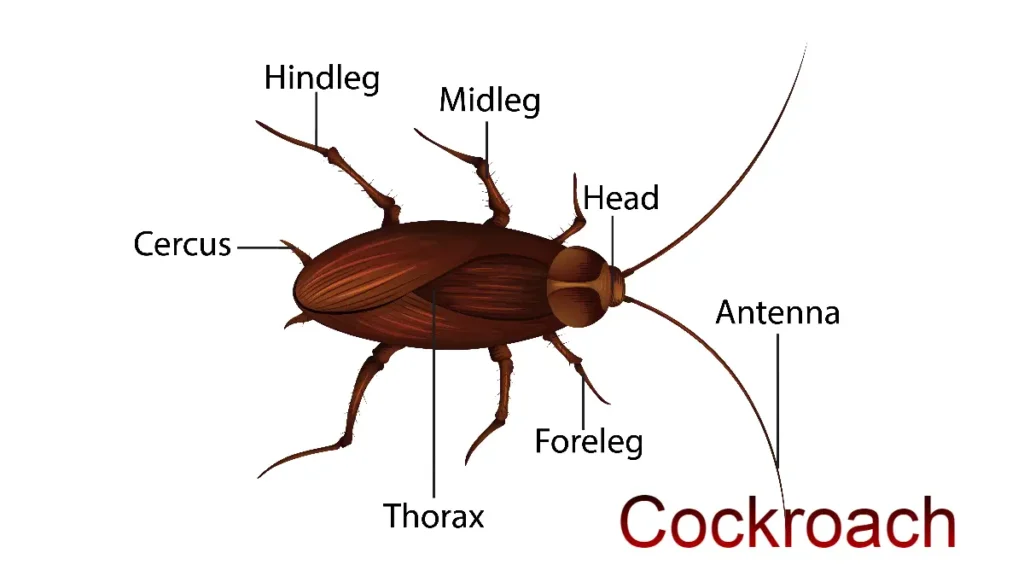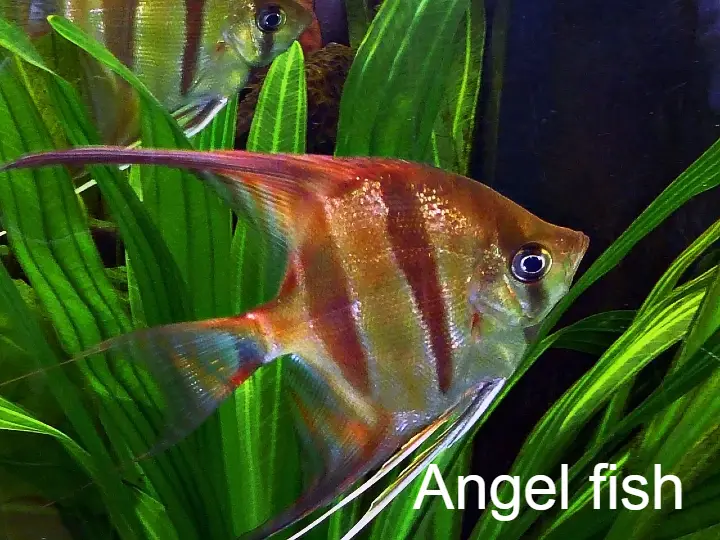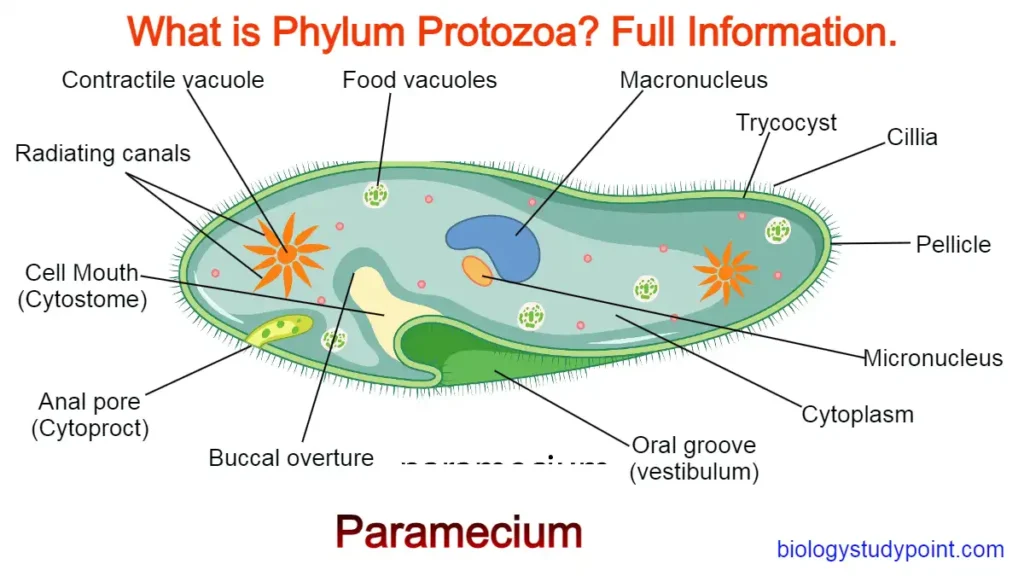Hello friends, in today’s article, we will study the plant kingdom thoroughly and learn in very simple language. You will get all the information related to the Plant kingdom or Botany, but this article must be read from beginning to end. Only then will you understand well, so let’s read step by step without wasting time.
Who gave the plant kingdom?
Scientist Carolus Linnaeus was the first to present the Plant kingdom; he was the first to classify the organisms, and he divided the organisms into two kingdoms.
- Kingdom Plantae
- Kingdom Animalia
He classified the organisms based on the cell wall. This means those with cell walls were kept in the Plant kingdom, and those that did not have cell walls were kept in the Animal kingdom. They made an artificial classification.
What is artificial classification?
When an organism is classified based on external morphological features, such as leaves, color, or shape, it is called artificial classification.
This classification was wrong because it was based only on external symptoms, which is incorrect. Another classification system, the Natural System of Classification, has rectified this.
What is the Natural system of classification?
When organisms are classified based on external and internal characteristics, such classification is called the natural classification system.
This classification was largely explained by the scientists George Bentham and Joseph Dalton Hooker. This classification also had a shortcoming, another whose name was the phylogenetic classification system.
What is the Phylogenetic system of classification?
When classification is based on phylogenetic relationships and internal and external characteristics, it is called phylogenetic classification.
What is the Phylogenetic relationship?
Based on ancestry, the relation in which ancestors are closer is called a phylogenetic relationship. Our ancestors had more relationships with apes (chimpanzees).
Characteristics of the plant kingdom –
- They are multicellular and eukaryotic. There are some exceptions in these; there is also a single cell.
- Their growth is uncertain.
- A low level of sensitivity is also found in these. For example – the plant of Chui Mui.
- In these, the cell wall is made of cellulose.
- They are autotrophic/photosynthetic producers.
- These are of both terrestrial and aquatic types.
- Food is stored in them in the form of starch.
- There are both types of asexual reproduction and sexual reproduction.
- Generation alternation is found in them.
- Theophrastus is the father of botany.
- They get their nutrition by photosynthesis because they have Chloroplast in their cell.
But some plants are heterotrophic. They get their nutrition from insects like – Utricularia (Bladderwort) and Venus fly traps. You may have seen some flowers in movies or videos that when insects sit on those flowers, the flower closes, and insects get trapped inside it. After this, these flowers get nutrition by decomposing these insects.
Classification of the plant kingdom –
Scientist Eichler has divided the plant world into two parts.
- Cryptogamous
- Phanerogamous
What are cryptogamous?
Seedless plants have been kept in this group, and seeds have not been found. This group is divided into three parts.
- Thallophyte
- Bryophyte
- Pteridophyte
Characteristics of Thallophyte (Algae) –
- The study of algae is called Phycology/Algology.
- Algae are found in the Monera kingdom, Protista kingdom, and Plant kingdom in all three kingdoms.
- Their body is called a thallus. See what it is, Thallus; when the plant body is not differentiated into root, stem, leaves, fruit, and flower, it is called Thallus.
- It is aqueous. They are found in both sea and fresh water.
- They are also single-celled. Like – Chlamydomonas.
- They live even after forming a colony. Like – Volvox
- They are also fibrous, like – Spirogyra, Ulothrix, etc.
- There are both types of asexual reproduction and sexual reproduction.
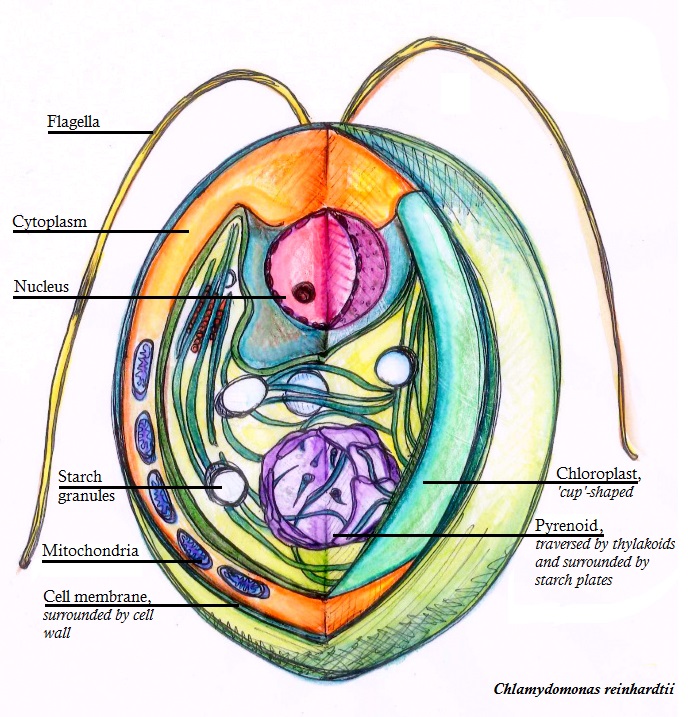
Asexual reproduction –
In asexual reproduction, fission and sporulation take place, and spores can be of two types. Non-motile spores and motile spores. This reproduction consists mostly of motile spores. Those in which flagella are found are called Zoospore/motile spores because they move with this flagellum, and those in which flagella are not seen are called Conidia/non-motile spores.
Sexual reproduction –
Gametes are formed in sexual reproduction, and these gametes are of three types. Isogamete, Anisogamete, and Oogamete.
Isogamete – Gametes of the same shape and size are called Isogamete. These gametes are of two types. Flagellated Isogamete like – Spirogyra and Chlamydomonas and Unflagellate Isogamete like – Ulothrix
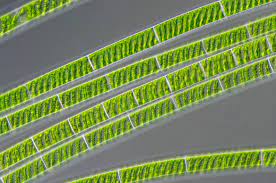
Anisogamete – Such gametes that have the same shape but are unequal in size are called anisogamete. Like – Udorina
Oogamete – Such gametes whose shape and are unequal are called Oogamete. The small gamete is the mete, and the large gamete is the fame, such as Volvox and Fucus.
Classification of algae
Algae are mainly divided into three based on colors.
- Green Algae/Chlorophyceae)
- Brown Algae/Phaeophyceae)
- Red Algae/Rhodophyceae
Chlorophyll-a and beta carotenoid are found in all algae. These are of different colors because different pigments are found in them.
Green Algae/Chlorophyceae) –
- Chlorophyll-a and beta carotenoid are found in it, and chlorophyll-b is found along with it. These chlorophyll-a and b are in such a large amount that they turn green in color. These chlorophylls are found in green leaves.
- In these, food is stored in the form of starch, and the place where this starch is stored is called pyrenoid.
- In these, the cell wall is divided into two layers: external and internal. The outer layer is made of pectose, and the inner layer is made of cellulose.
- The flagella are uniformly found on the top of the motile spores. Whose number can be 2-8.
Examples – Chlamydomonas, Volvox, Ulothrix, Spirogyra, Chara, etc.
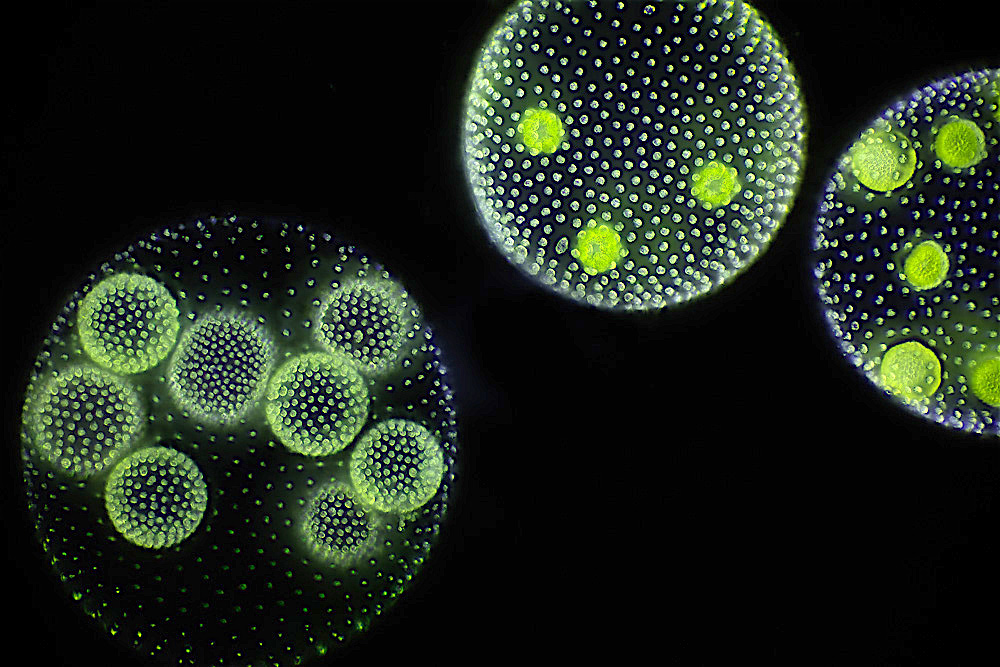
Brown Algae/Phaeophyceae) –
- It contains chlorophyll-a and c. Carotenoids are also there. Along with this, there is another pigment named Fucoxanthin, which gives it a brown color.
- These are mostly found in the sea.
- Their size and shape are mostly fibrous. This fiber is of two types. One is simple fibrous, and the other is dense fibrous. Simple filamentous means they have fewer filaments like – Ectocarpus, and dense filamentous means they contain many filaments like – kelp, and this kelp alga is one hundred meters long.
- Food is stored in them in the form of laminar and mannitol. It is a type of carbohydrate.
- A phycocolloidal substance called algin is found outside its cell wall. It is used in making paint and polish.
- The spore formed in their asexual reproduction is pear-shaped; in this spore, two flagella have come out from the unequal side.
- The gametes formed in their sexual reproduction are also pear-shaped.
- Their body or Thallus is haploid. Only Fucus is diploid.
- Examples – Dictyota, Ectocarpus, Laminaria, Sargassum, and Fucus.
- Sargassum is used as food.
Red Algae/Rhodophyceae –
- It contains chlorophyll-a and d. Carotenoid is also present; it also includes another pigment named Phycoerythrin, which gives red color to this algae.
- It is mostly found at the base of the sea, and the water here is warm.
- In these, food is stored in the form of Floridian starch, which has a similar structure to glycogen and amylopectin.
- The spores that are formed in their asexual reproduction are non-motile.
- The gametes produced in their sexual reproduction are also non-motile.
- Examples – Gelidium, Gracilaria, Chondrus crispus, Polysiphonia, Porphyra, etc.
What are bryophytes?
- These are found in moist, shady places on the hills, and when plants are found in such areas, they are called Sciophytes.
- They are called the amphibians of the plant kingdom. What is it called? It is the first terrestrial plant; when they make gametes, their gametes go into the water and fertilize there, and the new organism that is formed after fertilization comes back to the land. It means that their life is on the ground but also dependent on water.
- Their body is Thallus, and this Thallus is haploid.
- In their Thallus, a root-like structure emerges, which is called a root.
- Their main plant body is called gametophyte.
The life cycle of Bryophytes
Their male gametophyte has a male reproductive organ called antheridium, and the female gametophyte has a female reproductive organ called archegonium. Both these structures are multicellular, and each of their cells is haploid.
Now, both will make male and female gametes; the male gamete is called Antheridia, and the female gamete is called Egg. Both these gametes are haploid. The Antheridia is biflagellate. This antheridium reaches the archegonium through water, after which fertilization starts, and after fertilization, the zygote is formed.
This zygote is diploid. After that, this zygote undergoes continuous division to form a sporophyte structure. This sporophyte remains attached to the gametophyte and receives nutrition as it cannot photosynthesize.
This sporophyte has three parts. Foot, Seta, and capsule: The foot helps in adhesion, and the seta sends nutrition to the capsule because there are many diploid cells. These diploid cells are called spore mother cells.
These mother cells will undergo meiosis to form another new haploid structure called a spore. They have some structures called Cletus, which absorb water from the environment, which causes the capsule to burst and the spores to come out. Now, these spores come out and divide continuously to form gametophytes. This process will continue, and the number of bryophytes will increase.
Classification of Bryophytes
There are two types of bryophytes.
- Liverwort (Hepaticopsida)
- Moss (Muscidae)
Liverwort (Hepaticopsida) Moss (Muscidae)
In this, the gametophyte is formed by direct germination from the spore. In this, the gametophyte is formed by indirect germination, i.e., after the spore first filament (Protonema) is formed, and this filament further forms the gametophyte.
Liverwort (Hepaticopsida) –
Their gametophyte structure is similar to the liver, hence called liverwort.
Prime example – Marchenshia.
They reproduce asexually under adverse conditions, and in asexual reproduction, they form a cup-like structure called a gemma cup. On this cup, a green multicellular structure called gemma is formed, and it grows out of which some parts break off and fall to the ground, and this broken part grows to form a gametophyte.
In this, the sporophyte is completely parasitic on the gametophyte.
Moss (Muscidae) –
In this, there is indirect germination.
Its sporophyte is semi-parasitic on the gametophyte because its sporophyte does photosynthesis. Due to this, it prepares food but remains attached to the gametophyte for shelter.
Examples – Funaria, Polytrichum, Sphagnum, etc.
What are pteridophytes?
- These are used as decorations.
- From the point of view of development, these are the first terrestrial plants.
- First of all, vascular tissue came in these.
- Their main plant body is sporophyte, and their main plant body is differentiated into root, stem, and leaf.
- They were meeting effectively 350 million years ago; that is, they were meeting in large numbers.
- They are called reptiles of the plant kingdom. Why is it said because, based on the origin of development, fishes → amphibians, → reptiles came first? So they came after amphibians; they are called reptiles, not creeper organisms.
- These have also been found on the ground but depend on water.
The life cycle of Pteridophytes
Their main plant body is called sporophyte, and this sporophyte is diploid; two types of leaves are found on them, and these two leaves perform different functions, and based on function, they also have different names. It is called Tropophyll, and it is related to photosynthesis. The other leaf is called Sporophyll.
This leaf is related to reproduction. There are sporangia on this Sporophyll, and inside this spore bag are called spore mother cells. All these cells are diploid; now, these cells produce many haploid spores by meiotic division, due to which the sporangium bursts and these spores fall outside on the ground.
After that, it divides continuously to form a small structure called gametophyte or prothallus. In this gametophyte, both anther and pistil are found. From this anther, the pistil goes through the water to the archegonium of another gametophyte, fertilizes the Egg, and forms a diploid zygote. This zygote develops into an embryo, which develops into the ground and the main plant body (sporophyte) in this life. Isospores are present in the cycle; hence, they are called homospores.
Another life cycle of pteridophyte
There are two types of sporophytes in it, and both sporophytes have different leaves. The leaf of a sporophyte is called a microsporangium; on this leaf, there is a microsporangium, and inside this microsporangium, there is a microsporangium mother cell.
Meiosis takes place in this cell, and as a result, spores are formed. These spores are called microspores. A microspore is called a microspore because it is smaller than the megaspores; after that, when there are many microspores, the sporangium bursts, and microspores come out.
Now, this microspore further develops into a gametophyte, and only anther is found in this gametophyte in this gametophyte. Hence, it is called a male gametophyte.
The leaf of the second sporophyte is called the megaspore leaf because there is a megaspore receptacle on this leaf on this leaf. Inside this megaspore receptacle, there is a megaspore mother cell.
Now, meiosis takes place in this cell, as a result of which spores are formed, and this spore is called a megaspore; it is called a megaspore because it is bigger than the microspore when there are many megaspores; the megaspore bursts and megaspore comes out. Is.
This megaspore further forms gametophyte, and only archegonium is found in this gametophyte in this gametophyte. Hence, it is called the female gametophyte; after the male gamete goes to the female gamete through water, the embryo again forms sporophyte after fertilization. Now you have seen that in this life, There are unequal spores in the circle. Hence, it is called heterospory.
Example – Selaginella and Salvinia.
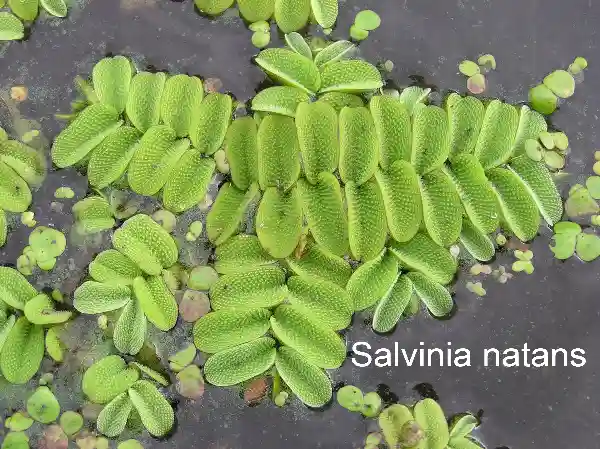
Classification of Pteridophytes
Pteridophytes are divided into four groups.
Psilopsida –
All the plants in this group have become extinct except one, celom, which is also known as a living fossil.
Lycopsida –
Two examples of this class are Selaginella and Lycopedium.
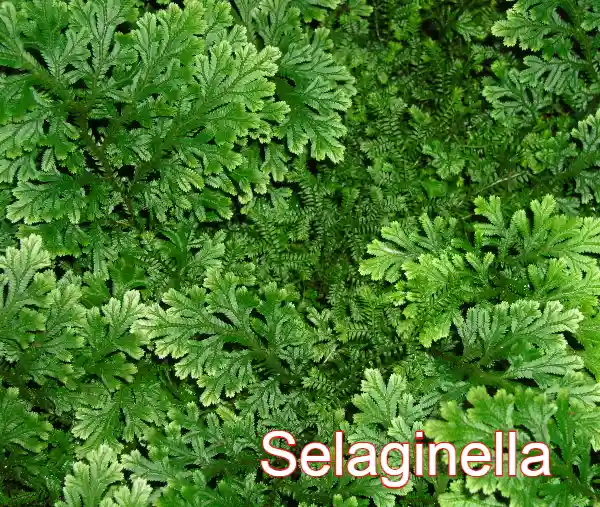
Sphenopsida –
This class is also called horsetail because the leaves of the plants come out like a horse’s tail. For example, Equisetum, mostly because of this, has a fire in the forest.
How does fire occur in forests? Silica is found in their leaves and stems; when they collide, a spark comes out due to the friction between them, causing fire.
Tiropsida –
The ability to bear seeds was first seen in this, and fern was placed in it.
Examples – Dryopteris, Adiantum, Terris
That’s it, now our next point about cryptogams –
What are Phanerogams?
Seeded plants are kept inside it, which means seeds are found inside. It is divided into two parts.
- Gymnosperm
- Angiosperm
Characters of Gymnosperm
Their seeds have no cover; hence, they are called gymnosperms.
- They do not have flowers, or they are non-flowering.
- Their main plant body is sporophyte, which is diploid.
- Their body is differentiated into stem, leaf, and root.
- Stem—The stem of these can be in the form of shrubs or trees, but it is mostly in the form of a tree. The stem can be branched or unbranched. Branched stems occur in Pinus, and unbranched stems occur in Cycas. The tallest Gymnosperm is Sequoia.
- Root – There are two types of roots.
- Fungal root (Mycorrhiza) – There are some trees whose roots show a symbiotic relationship with fungi, that is, by absorbing water and minerals, for example – Pinus, in which fungal roots are found.
- Coralloid roots – In this, blue-green algae show a symbiotic relationship; they do nitrogen fixation. Example – Cycas
- They have taproots.
- This Gymnosperm is mostly found in cold areas or where there is less water. Its leaves are small and needle-like. A layer of wax covers the leaves, which is called the cuticle. Small holes in the cuticle are also called Stomata.
The life cycle of Gymnosperm
- In this, the life cycle is mostly heterosporous.
- There are two types of sporophytes, and both sporophytes have different leaves. The leaf of a sporophyte is called a microsporangium; on this leaf, there is a microsporangium, and inside this microsporangium, there is a microsporangium mother cell.
- Now, meiotic division takes place in this cell, resulting in spores called microspores. A microspore germinates or develops inside the sporangium, and a cover is placed around it; then, this structure is called a male gametophyte.
- This male gametophyte is called pollen grain, and its nucleus is called the male gamete; it contains only one male gamete.
- The leaf of the second sporophyte is called megasporangium because, on this leaf, there is megasporangium. It is also called an ovule, and it later forms the seed. This seed is not covered in any way, which is why it is called the Gymnosperm.
- This means this ovule is naked. Inside it, there are two coverings, and inside it, there is a tissue called the ovule body. In this ovule body, there is a big cell called the megaspore mother cell.
- Meiosis occurs in this cell, and four megaspores are formed, out of which three are destroyed, and one megaspore remains, which is haploid. This megaspore divides continuously to form a group of megaspore cells called EmbryosacEmbryosacEmbryosacEmbryosacEmbryosacEmbryosac.
- It is also haploid; there can be one or more than one of these cells, whose size is slightly larger than other cells, which are called egg cells. This egg cell is inside the endosperm. That’s why the endosperm is called female gametophyte.
- Now, pollen grain comes in through the wind. After that, a pollen tube is formed from which a male gamete goes, and once fertilization takes place, the zygote is formed.
The character of angiosperm
In these, the main plant body is also sporophyte.
There is a covering over their seeds; hence, they are called angiosperms. Aavrit means to cover. It is floral.
The life cycle of angiosperms
They are floral, and if we talk about the structure of their flowers, they are on inflorescence, which comprises four parts.
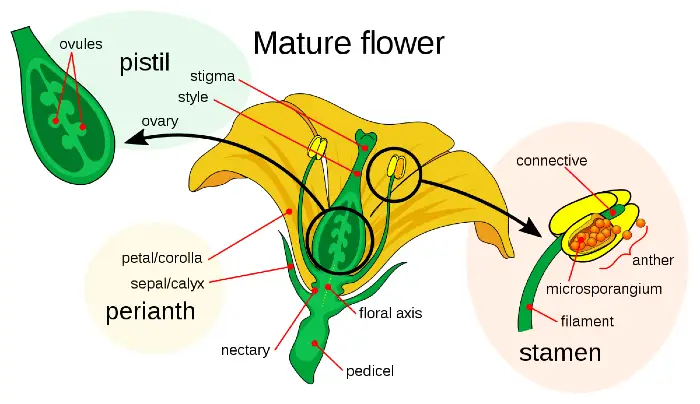
The gynoecium is made up of a pistil/carpel, and the pistil is made up of three things—stigma, style, and ovary.
Androecium—It is made up of Stamen, which Are made up of two things: anthers and filaments. This Stamen is also called a microsporangium leaf because it is a modified form of microsporangium leaf with four microsporangia.
Inside each microsporangium is a microspore mother cell, and meiotic division takes place in these, making a microspore tetrad covered with callose. The small spore inside it breaks free and divides inside to form a pollen grain consisting of two generative cells and a vegetative cell, of which two generative cells are called male gametes; this three-cellular structure is called a male gametophyte.
Calyx – It is made up of sepals.
Corolla – It is made up of petals.
Together, these four structures are called floral leaves.
In this, the megaspore transforms into the pistil. Inside this pistil, there is a sporangium called the ovule, which later develops into a seed. The seed is covered with a cover. Hence, it is called angiosperm.
Inside this ovule are two coverings; inside it is a tissue called the ovule body. This ovule body has a big cell called the megaspore mother cell. Meiosis occurs in this cell, and four megaspores are formed, out of which three are destroyed, and one megaspore remains, which is haploid.
Now, the haploid nucleus inside divides to form 2 to 4 to 8 nuclei, two of which come together in the middle. These nuclei are covered with a cell wall, and eight nuclei become seven cells. The whole structure is called an Embryosac.
It contains an egg or female gamete. Hence. Hence, it is also called the female gametophyte; after a male gamete or pollen grain comes, it germinates, and after a pollen tube is formed, two male gametes come inside this pollen tube. One of the male gametes fuses with the Egg to form a zygote.
The second male gamete in the middle of which the two nuclei are together is called the primary endosperm nucleus. A triploid cell is formed by fusion with it, called a primary endosperm cell. This endosperm nourishes the zygote. After this, the main plant body is formed.
Some important questions and answers are given in the article.
What are some characteristics of the plant kingdom?
What are the five subgroups of the plant kingdom?
Plant kingdom classification?
Is the plant kingdom autotrophic or heterotrophic?
Plant kingdom examples?
I hope you enjoyed the information about the plant kingdom or botany. If so, please share it with your friends.
Thank you
The second male gamete in the middle of which the two nuclei are together is called the primary endosperm nucleus. By fusion with it, a triploid cell is formed, which is called a primary endosperm cell. This endosperm nourishes the zygote. After this, the main plant body is formed.
Some important questions and answers are given in the article.
What are some characteristics of the plant kingdom?
What are the five subgroups of the plant kingdom?
Plant kingdom classification?
Is the plant kingdom autotrophic or heterotrophic?
Plant kingdom examples?
I Hope friends, you have liked the information about the plant kingdom or botany, if you like it, then share it with your friends too.
Thank you
